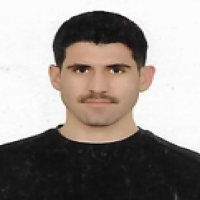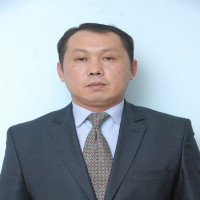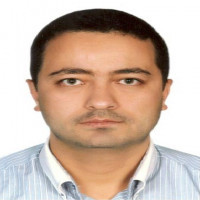Research Article
Review Article
Aim & Scope
Aim:
Journal of Dicle Academy is an internationally published ACADEMIC and PEER-REVIEWED journal that started publishing in 2021. The studies sent to our journal were prepared in the basic field of Social, Humanities and Administrative Sciences; It is expected to be based on scientific methods, develop suggestions for problems and contribute to the field. Our journal takes care to publish and disseminate studies that will contribute to scientific developments. In this context, Dicle Academy Journal aims to evaluate the knowledge accumulated in the basic fields of social, human and administrative sciences from past to present, to develop this knowledge and to produce new ideas that contribute to the field.
Scope:In our journal, original research articles are published on all subjects related to the basic field of Social, Humanities and Administrative Sciences. Studies in Turkish and English are evaluated, provided that they are directly or indirectly related to the field in question. Studies that are outside the purpose and scope of our journal are not published.
Subject Category
Core Field ●Social, Human and Administrative Sciences
Science Area ●Archaeology ●History ●Linguistics ●Literature ●Law ●Econometrics ●Quantitative Decision Methods ●Educational Sciences ●Philosophy ●Sociology ●Accounting ●Finance ●Theology ●Journalism ●Communication ●Cinema ●Economics ●Business ●Public Administration ●Finance ●Health Management ●Social Service ●Marketing ●Advertising ●Tourism
Target Audience: The target audience of our journal consists of academics, researchers, professionals, students and relevant professional and academic institutions and organizations.
Author Guidelines
GENERAL INFORMATION-The studies to be sent to the journal must be written using the sample template below, created according to the journal writing rules.-The Cover Page, Copyright Transfer Form, Conflict and Ethics Declaration and Similarity Report must be uploaded along with the Full Text file.-Author information should never be included in the Full Text file when the article is first uploaded to the system. Author information will be added after the article processing processes are completed. The Cover Page should contain only the title and author information.-Articles other than Turkish and English are not accepted in our journal.-If your article requires an ethics committee certificate, upload the document in question; In cases where an ethics committee document is not required, a Conflict and Ethics Declaration document must be prepared. Situations where an Ethics Committee Certificate is required are explained on the Ethical Principles and Publication Policy page.
Download ARTICLE TEMPLATE
Download COVER SHEET
Download COPYRIGHT TRANSFER FORM
Download CONFLICT AND ETHICS DECLARATION FORM
-After pasting their work onto the ARTICLE TEMPLATE, authors must upload this file to the system.
-Articles that are not prepared in accordance with our writing rules, sent with incomplete documents, or do not comply with APA 7 referencing are returned to the author at the pre-check stage without being evaluated.
WRITING RULESIn accordance with the universal rules of scientific text writing, articles must include general elements such as Title, Author Information, Abstract, Keywords, Section Headings, Quotation, Conclusion and References. These are arranged as follows.Page Structure and Font FormatArticles should be written in Microsoft Office Word, on paper size A4 and in the "Cambria" font style, with "11 point font" and "1.15" line spacing. Margins top, bottom, left edge and right edge should be 2.5 cm.Article TitleThe title should be written at the top of the text, centered, all letters capitalized, 12 point, bolded with Cambria font, first in 6 pt, then in 6 pt, and with single line spacing.
The English title should appear immediately after the Turkish title. It should be written in all capital letters, Cambria font, 10 point, centered, no bold, 6 pt before and after, single line spacing.
Author Information
The name(s) of the author(s), without a title, should be given in bold, right below the English title and centered, and the surname(s) should be given in capital letters, 10 pt.
The professional information of the author(s) should be given in the order of title, institution, e-mail and ORCID number, separated by commas and just below the author's name and surname. It should be 9 point, normal and centered. Numbering should be added as x2, not as a footnote.
Abstract
The abstract should be written in Turkish, centered below the author information, bold, 9 pt, first 6 pt, then 6 pt, written in capital letters, under the heading (ÖZET), expressing the content in the most appropriate way, consisting of at least 100 and at most 250 words.
English Abstract, below the Turkish Abstract and Key Words, centered, bold, 9 pt, first 6 nk and then 6 pt, written in capital letters (ABSTRACT), expressing the content in the most appropriate way, minimum 100, maximum 250. It must be written in English consisting of words.
Keywords
Under the ÖZET, to the right of the heading (Anahtar Kelimeler:), written in bold in 9-point font, at least three and at most five Keywords, also written in 9-point font, should be given. There should be a period at the end.
English Keywords should be given at least three and at most five, written in 9-point font, to the right of the (Keywords:) heading, written in 9-point boldface, after the English Abstract.
Main Text
The main text should be written in Cambria font, 11 point, first 6 pt, then 6 nk and 1.15 line spacing. There should not be any spaces before or after any heading. The number of pages of the study should not exceed 25 pages, including bibliography.
The sources used in the article must be arranged in accordance with APA 7 referencing rules, each document mentioned must be included in the references section, and a bibliography must be added at the end of the study in accordance with the reference notation.
Titling
Main headings should be numbered as 1st, 2nd, 3rd, … in Cambria font, 11 points; Subheadings should be written as 1.1., 1.2., 1.3., …. Main headings should be written with all letters capitalized and subheadings, the first letters of each word should be capitalized and the other letters should be lowercase. The REFERENCES heading is not numbered.
Tables, Figures and Graphs
Table title; It should be written in 11 point font, above the table, centered. Table numbers will be sequential (Table 1.). There will be no spaces before or after. The expression Table 1. will be written in bold, but the Table title will be written normally. Table content can be written in 11, 10, 9 or 8 point font, depending on the situation. The table should be extended on both sides and centered. Vertical lines should not be used in the table.
The source notation should be located immediately below the table. It should be 9 point and centered. Source: statement should be bold, but the source text should be written normally.
Figure and Graphic title; It will be written in 11 point font, at the top, centered. Figure numbers will be sequentially (Figure 1.) or (Graph 1.). There will be no spaces before or after. Figure 1. or Graph 1. will be written in bold, but the Table title will be written normally. References for tables, figures or graphs should be given at the bottom, centered, in 9-point font.Pictures
Pictures, photographs and other visuals are given in color, high resolution or scanned, just below the section or paragraph in the text.
Images, like Tables and Figures, are numbered and titled in the format (Image/Image/Photo 1.). The sources from which the images are taken are also shown below the images, such as tables and figures.
CONFLICT AND ETHICS STATEMENTAfter writing the bibliography, "Conflict and Ethics Statement" should be added to the end of the article. In studies that have received Ethics Committee permission, information about the relevant document should be provided under the METHOD heading.
Conflict of Interest Declaration: There is no conflict of interest between any person, institution or organization that may be a party to this study.
Support and Acknowledgments: No financial support was received from any institution or organization for the study. We would like to thank the Editors of Dicle Academy Journal for their interest and effort and the referees for their contributions.
Ethics Committee Permission: The subject of the study does not require ethics committee permission. The authors declare that ethical rules were followed in all preparation processes of this study. Or. Ethics committee approval for the research was received from the Xxxx University Rectorate Xxxx Ethics Committee with the decision dated 00.00.2024 and numbered 00/11. The authors declare that ethical rules were followed in all preparation processes of this study.
Contribution Rate: The authors contributed equally to the work. Or. The contribution rate of the 1st author is approximately 60%, and the contribution rate of the 2nd author is 40%.
* * * * *EXTENDED ABSTRACTOnly extended English abstracts are requested from Turkish articles. Extended abstracts should be at least 500 and at most 1000 words, should include the purpose, method, findings, results and discussions of the article and should be given after the References section. The extended abstract should also be prepared in accordance with the font specifications used in the main text. It should be written in Cambria font, 11 point, first 6 pt, then 6 nk and 1.15 line spacing.
PRINCIPLES REGARDING REFERENCES
-Articles must be edited taking into account APA 7th edition basic referencing rules.
-The sources used in the article are given under the left-aligned, bold "REFERENCES" heading, like other headings in the text. This title is given on the same page after leaving a space after the end of the text.
-Space between paragraphs/references should be written with Before (0 pt) After (6 pt), 11 pt and single line spacing, justified on both sides.
-In in-text reference, the author's name and date information must be exactly the same as the author's name and date information in the bibliography.
-Numbering or bullet points are not used in the bibliography. In cases where the number of authors is twenty or less, all author names are included in the imprint.
-Before uploading an article to Journal of Dicle Akademy, the studies must be prepared according to APA 7 rules. Studies that are not edited according to the APA 7 system are sent back to the author to correct this problem before being evaluated.
-Detailed information about APA 7 format can be accessed at: https://apastyle.apa.org/style-grammar-guidelines/references/examples.
ARTICLENote: In APA 7, the spelling "Doi: ..." in Doi writing was removed and the rule was introduced to write all addresses starting with "http". If the article has a Doi number, it should be added. In articles, the article name should be written in lowercase letters in a plain font, and the journal name should be written in italics and in capital letters. Journal volume issue in italics, issue no. must be in parentheses and plain.
-In case more than one author is cited in a parentheses, the studies are “; ” should be separated by (semicolon): (Creswell, 2014; Yıldırım & Şimşek, 2013; Narin et al. 2019)
- You can easily access the DOI numbers of the studies in your bibliography from the link below. (When you copy all the studies in your bibliography and paste them into the field in the relevant link, bibliographies with DOI numbers will be displayed.)
https://apps.crossref.org/SimpleTextQuery?s=08
BOOKS AND BOOK SECTIONThe book name should be given in italics and lowercase letters. There should be a period at the beginning and end of the book name, and then the publishing house should be given with a plain capital letter.
Single Author
Gürbüz, A. (2020). The path to self-knowledge in the light of Zen and Sufism (5th ed.). Human Publications. https://doi.org/10.54821/uiecd.1122493
With Two Authors
Özsoylu, A. F. & Ergen, Z. (2014). Public sector analysis in Turkey. Karahan Publications. https://doi.org/10.54821/uiecd.1122493
Ethical Principles and Publication Policy
PUBLICATION POLICY
1. It is important to pay attention to the following issues during article submission, in terms of ensuring a healthy and scientific evaluation process.
2. The article to be sent to the journal should not have been published anywhere before and should not be in the publication process of another journal. It is not ethical to send the article to another publication without the knowledge of the journal before the process is completed. In the event that this situation is detected, no article of aforesaid writer in the next process will be evaluated.
3. Although the journal language is Turkish, articles in English can also be published.
4. The article is sent to two referees after it is examined in terms of suitability for publication (articles that are not considered suitable for publication are not included in the process). The article, which receives two publishable reports as a result of the evaluations of the referees, is published in an issue deemed appropriate by the journal management. If one of the referee reports is positive and the other is negative, the article is sent to a third referee. In this case, it is decided whether the article will be published, according to the report of the third referee.
5. Manuscripts submitted in the Journal of Dicle Academy as copyright article, prepared text (edition critical), translation, book review, meeting notes are taken into consideration.
6. If the articles were presented in the form of a paper in a congress, symposium or meeting, provided that the date and place are specified, they can be published if deemed appropriate by the editorial board. All responsibilities in this regard belong to the authors.
7. Articles; It should be a maximum of 25 pages, including notes, tables, figures, graphics and references. Articles exceeding 25 pages are subject to evaluation by editors. Figures, photographs, graphics and drawings should be numbered sequentially, and when appropriate in the text, this order should be indicated and the title should be written on it, and if quoted, the source should be written in the subtitle.
8. Articles should contain an abstract in Turkish and English, consisting of 100-250 words, which summarizes the subject in a comprehensive way. “Keywords” consisting of at least three (3) and at most five (5) words should be placed immediately after the abstract.
9. There is an obligation to comply with the grammar rules (spelling, punctuation, clarity, intelligibility, etc.) in the studies submitted to the journal. For this reason, the author is fully responsible for any problems and criticisms that may occur.
10. Manuscripts sent to our journal should be written in Microsoft Office Word program or sent by adapting to this program.
11. Original text of translations, simplifications and transcription articles should be added as pdf, and cover images of book introductions and reviews should be added in jpeg format.
12. The articles whose peer-review process has been completed are notified to the authors one month before the publication is decided; It is requested to check the articles and send the final version.
13. Journal of Dicle Academy has the right to whether publish the submitted articles, and to make corrections on the articles when it deems necessary. The legal responsibility of an article published in the journal belongs to its author. The author who submits an article to the journal is deemed to have accepted these principles. Articles that do not comply with these principles will not be evaluated.
14. More than one article by an author in the same period is not accepted in our journal. In addition, the same author's article cannot be published two times in a row.
15. Articles that do not arrive between the date ranges announced on the website of our journal will not be evaluated.
16. Journal of Dicle Academy checks for plagiarism: Submitted manuscripts that pass preliminary control are scanned for plagiarism using TURNITIN software. If plagiarism/self-plagiarism will be found authors will be informed. Editors may resubmit the manuscript for similarity check at any peer-review or production stage if required. High similarity scores may lead to rejection of a manuscript before and even after acceptance. The percentage of similarity score taken from each article, the overall similarity score is generally expected to be less than 20%. Those whose similarity rate exceeds 30% are directly rejected. A maximum of 5% is tolerated in the "extract citations" portion of the Turnitin report.
17. If situations such as manipulating and distorting the data used in the articles and using fabricated data are detected, this situation will be officially reported to the institution where the author of the article works and the article will be rejected. Journal of Dicle Academy has the right to request the output files related to the analysis results from the authors according to the feedback given by editors and/or reviewers.
18. When the study prepared for publishing is produced from a book chapter, an unpublished report, and master thesis or doctorate dissertation, it should certainly be stated in Turkish and English on the first page of the study.
19. The publication processes implemented in Dicle Academy Journal form the basis for the development and distribution of information in an impartial and respectful manner. The processes implemented in this direction directly reflect on the quality of the work of the authors and the institutions that support the authors. Peer-reviewed studies are studies that embody and support the scientific method. At this point, it is important that all stakeholders of the process (authors, readers and researchers, publisher, referees and editors) comply with the standards regarding ethical principles.
20. In order for the articles produced from the notification to be evaluated, the author must send the article with a signed commitment stating "My work has not been published before and will not be published." Because duplication/republication/scientific misleading/multiple publication is a crime. According to TÜBİTAK Publication Ethics Board, republication is to send or publish the same research results to more than one journal. If an article has been previously evaluated and published, publications other than this are considered re-publication.
PUBLICATION PRINCIPLES
Journal of Dicle Academy adheres to national and international standards in research and publication ethics. It complies with Press Law (a), Intellectual and Artistic Works Law (b) and Higher Education Institutions Scientific Research and Publication Ethics Directive (c). It has also adopted the International Ethical Publishing Principles (d) published by the Committee on Publication Ethics (COPE), Directory of Open Access Journals (DOAJ) and Open Access Scholarly Publishers Association (OASPA).
a) Press Law
b) Law on Intellectual and Artistic Works
c) Higher Education Institutions Scientific Research and Publication Ethics Directive
d) Transparency and Best Practice Principles in Academic Publishing
Publication Ethics and Malpractice Statement
Correction, Retraction, Expression of Concern
Editor should consider publishing correction if minor errors that do not effect the results, interpretations and conclusions of the published paper are detected. Editor should consider retraction if major errors and/or misconduction that invalidate results and conclusions are detected. Editor should consider issuing an expression of concern if there is evidence of research or publication misconduct by the authors; there is evidence that the findings are not reliable and institutions of the authors do not investigate the case or the possible investigation seems to be unfair or nonconclusive. The guidelines of COPE are taken into consideration regarding correction, retractions or expression of concern.
Plagiarism Action Plan and Journal Precautions
The journal respects intellectual property and aims to protect and promote the original work of its authors. Articles containing plagiarism are against the standards of quality, research, and innovation. Therefore, all authors who submit articles to the journal are expected to comply with ethical standards and avoid plagiarism in any form. If an author is suspected of plagiarism in a submitted or published article, the journal's Ethics Editor reviews the work first. This work is then reviewed by the Editorial Board. The Journal then contacts the author(s) to submit their comments within two weeks. If the journal does not receive any response from the author within the specified time, it requests the investigation of the claim by contacting the university to which the author is affiliated. The journal will take the following serious precautions against published articles that are found to contain plagiarism.
1. The journal will immediately contact the university to which the author(s) are affiliated, in order to take final action against the related author.
2. The journal will remove the PDF copy of the published article from its website and disable all links to the full-text article. The phrase Plagiarized Article will be added to the title of the published article.
3. The journal will disable the author's account and reject all future submissions by the author for a period of 3 years.
This journal checks for plagiarism in works submitted for review: Pre-checked articles are scanned for plagiarism using TURNITIN software. If plagiarism/self-plagiarism is detected, authors will be notified. If necessary, editors may check the article for plagiarism at various stages of the evaluation or production process. High similarity rates can cause a paper to be rejected before or even after it is accepted. This rate is expected to be less than 20%.
Publication of research that involve human subjects (i.e., surveys and interviews)
Journal of Dicle Academy is adopts the "Code of Conduct and Best Practice Guidelines for Journal Editors" and "Code of Conduct for Journal Publishers" of the Publication Ethics Committee (COPE) in order to create ethical assurance in scientific periodicals. In this context, the following points should be followed in the manuscripts submitted to the journal:
1) For research conducted in all branches of science that requires ethics committee approval (ethics committee approval should be obtained, this approval should be stated and documented in the article.
2) In research that requires ethics committee permission, information about the permission (name of the committee, date, and number) is in the method section, and also on one of the first/last pages of the article; In case of reports, information about signing the informed consent/consent form should be included in the article.
Editorial oversight and processing concerning special issues
A special issue can be published in the journal once a year upon the request of the Editorial Board. Manuscripts sent for inclusion in a special issue are first subjected to editorial review. Then it is examined in terms of compliance with the writing rules of the journal and similarity is scanned to prevent plagiarism. After these stages, it is taken into the peer review process in which the double-blind model is used.
Publication Ethics Policy
Plagiarism: To show others’ original ideas, methods, data or works as their own work, partially or completely, without reference to scientific rules,
Fraud: To produce data that is not based on research, to edit or change the presented or published work on the basis of untrue data, to report or publish these, to present an unstudied research as if it has been done,
Distortion: Falsifying the research records or the data obtained, showing the devices or materials not used in the research as being used, not evaluating the data that is not suitable for the research hypothesis, manipulating the data and/or results in order to fit the relevant theory or assumptions, falsifying or shaping the research results in line with the interests of the people and organizations,
Republishing: Presenting more than one work containing the same results of a research as separate works in academic appointments and academic promotions,
Slicing: Dividing the results of a research into pieces in a way that disrupts the integrity of the research and is inappropriate, and publishing in more than one issue, and presenting these publications as separate publications in academic appointments and promotions,
Unfair authorship: Including persons without active contribution among the authors or not including those who have active contribution, changing the author’s order in an unjustified and inappropriate manner, removing the names of those who have active contribution from the work in subsequent editions, having their names included among the authors by using their influence even though they have no active contribution,
Other types of ethical violations are as follows:
1) Not specifying the supporting persons, institutions or organizations and their contributions in the publications made as a result of the research conducted with support,
2) To use the theses or studies that have not yet been submitted or accepted as a source without the permission of the owner,
3) Not complying with ethical rules in research on humans and animals, not respecting patients’ rights in publications,
4) To violate the provisions of the relevant legislation in human biomedical research and other clinical research,
5) Sharing the information contained in a work that has been assigned to review with others before it is published without the explicit permission of the owner of the work,
6) Misuse of the resources, places, facilities and devices provided or allocated for scientific research,
7) To make unfounded, unwarranted and deliberate allegations of ethical violations,
8) To publish the data obtained without the express consent of the participants in a questionnaire and attitude research conducted within the scope of a scientific study or, if the research will be conducted in an institution, without the permission of the institution,
9) To harm animal health and ecological balance in research and experiments,
10) Failing to obtain written permissions from the authorized units in research and experiments before starting the work,
11) To carry out studies contrary to the provisions of the legislation in research and experiments or the provisions of the international conventions to which Turkey is a party, regarding the relevant research and experiments,
12) Failing to comply with the obligation of researchers and authorities to inform and warn those concerned about possible harmful practices regarding the scientific research,
13) Not using the data and information obtained from other persons and institutions in scientific studies, to the extent and as permitted, not to respect the confidentiality of this information and to ensure its protection,
14) To make false or misleading statements regarding scientific research and publications in academic appointments and promotions (YÖK Scientific Research and Publication Ethics Directive, Article 4).
Responsibilities of Stakeholders
Our readers and stakeholders can report any material error or violation of scientific research and publication ethics they see in the articles published in Journal of Dicle Academy by sending e-mail to lutfusizer@gmail.com We welcome such feedback as it provides an opportunity for us to improve, and we aim to respond promptly and constructively.
a) Editors' Responsibilities
The editors and field editors of Journal of Dicle Academy provide the following ethical duties and responsibilities considering Code of Conduct and Best Practice for Journal Editors (COPE Code of Conduct and Best Practice Guidelines for Journal Editors), Best Practice Guidelines (COPE Best Practice Guidelines for Journal Editors) for Journal Editors published by the Committee on Publication Ethics (COPE), and the Principles of Publication Ethics Flowcharts developed by COPE in possible situations of abuse or breach of publication ethics:
Impartiality and Publisher’s Freedom: Editors evaluate the submitted article proposals by considering their suitability to the scope of the journal and the importance and originality of their studies. Editors do not take into account the race, gender, sexual orientation, ethnic origin, nationality, or political views of the authors submitting the article proposal. Other institutions other than the journal editorial board cannot influence the correction or publication decision. Editors take care that the published issues contribute to the reader, researcher, practitioner, and the scientific field and to be original.
Independence: The relationship between Editors (Editor and Assistant Editors) and the publisher is based on the principle of the editor’s independence. According to the written agreement between the editors and the publisher, all decisions of the editors are independent of the publisher and the journal owner. Editors should reject, under no influence, incomplete or erroneous research that does not comply with the journal policy, publication rules, and level.
Privacy: Editors do not share information about a submitted article with anyone other than the responsible author, referees, and editorial board. It ensures that the articles evaluated by at least two referees are evaluated according to the double-blind review system and keeps the referees confidential.
Disclosure and differences of opinion: Editors and editorial board members may not use unpublished information in an article submitted for their own research purposes without the express written consent of the authors. Editors should not have a conflict of interest regarding articles they accept or reject.
Printing decision: Editors ensure that all articles accepted for publication are reviewed by at least two referees who are experts in their field. Editors are responsible for deciding which work will be published from the articles submitted to the journal, the validity of the study in question, its importance to researchers and readers, the comments of referees, and such legal requirements. Editors have the responsibility and authority to accept or reject articles. Therefore, it has to use its responsibility and authority in place and on time.
Ethical concerns: Editors will take action when ethical concerns arise regarding a submitted article or published article. As a matter of fact, they continue their business processes without compromising intellectual property rights and ethical standards. Any reported unethical publishing behaviour will be reviewed, even if it occurs years after publication. Editors follow COPE Flowcharts in case of ethical concerns. If ethical issues are significant, correction, retraction may be applied or concerns regarding the issue may be published in the journal.
Collaboration with Journal Boards: Editors ensure that all members of the advisory committee advance the processes in accordance with the editorial policies and guidelines. They inform the advisory board members about publication policies. It enables advisory board members to evaluate their work independently. They can contribute to new advisory board members and decide accordingly. They should send studies appropriate to the expertise of the members of the advisory board for evaluation. It interacts regularly with the advisory board. It holds regular meetings with the editorial board for publication policies and the development of the journal.
b) Authors' Responsibilities
Reporting standards: The authors of the original research should ensure that the work done and the results are presented accurately, followed by an objective discussion of the significance of the work. The article proposal should contain sufficient details and references.
Data access and retention: Authors are required to keep the raw data of their studies. When necessary, they should submit it for editorial review if requested by the journal.
Originality and plagiarism: Authors must submit entirely original works and if they have used the work or words of others, this must be appropriately cited. Plagiarism constitutes unethical publishing behaviour in all its forms and is unacceptable. For this reason, a similarity rate report is requested from all authors who submit an article to the journal.
Multiple, duplicate, backup or simultaneous submission / publication: Authors should not submit an article previously published in another journal for consideration. Submitting an article to more than one journal simultaneously is unethical publishing behavior and is unacceptable.
Authorship of the manuscript: Only those who fulfil the authorship criteria should be listed as authors in the content of the manuscript. These authorship criteria are as follows; (i) contributed to the design, implementation, data collection or analysis phases (ii) prepared the manuscript or made significant intellectual contribution or critically revised it; or (iii) saw the final version of the manuscript, approved it and agreed to be submitted for publication. Corresponding author should ensure that all authors (according to the definition above) are included in the list of authors and declare that they have seen the final version of the article and agree to be submitted for publication.
Statement and conflicts of interest: Authors should reveal conflicts of interest at the earliest possible stage (usually by submitting a disclosure form at the time of submission and including a statement in the article). All sources of financial support for the study must be declared (including the grant / fund number or other reference number, if applicable).
Peer review process: Authors are responsible for participating in the peer review process and are obliged to fully cooperate by responding promptly to editors’ requests for raw data, explanations and evidence of ethical approval, and copyright permissions. If a “required revision” decision is made first, the authors should review and re-submit their manuscript until the deadline given to the reviewers' comments in a systematic manner.
Fundamental errors in published works: When authors find material errors or inaccuracies in their own published work, they are obliged to inform the journal editors or publishers immediately and to cooperate with the journal editors or publishers to correct a typo in the article (erratum) or remove the article from publication. If editors or publisher learn from a third party that a published work contains a material error or inaccuracy, the author must take the responsibility of correcting or withdrawing the article immediately or providing the journal's editors with evidence of the paper's accuracy.
c) Responsibilities of Referees
Contribution to editorial decisions: Assists editors in their editorial decisions and assists authors in improving their articles through editorial communication. Indicates the completion of other articles, works, sources, citations, rules and similar deficiencies related to the article.
Speed: Any referee who does not feel qualified to review the proposal of the article or knows that the article review cannot take place on time should immediately notify the editors and reject the invitation to review, thus ensuring the appointment of a new referee.
Confidentiality: All article suggestions submitted for review are confidential documents and should be handled as such. It should not be shown or discussed to others unless authorized by the editor. This also applies to referees who decline the invitation to review.
Impartiality standards: Comments on the proposal of the article should be made impartially and recommendations should be made in a way that the authors can use to improve the article. Personal criticism of the authors is not appropriate.
Acceptance of references: Referees should describe relevant published works that are not cited by the authors. The referee should also inform the editor of any significant similarities between the manuscript reviewed and any other manuscript (published or unpublished).
Conflicts of interest: Conflicts of interest should be reported to the editor. There should be no conflict of interest between the referees and the stakeholders of the article that is the subject of evaluation.
Editorial and Blind Review Processes
Editors are obliged to comply with the policies of "Blind Review and Review Process" stated in the journal's publication policies. Therefore, the editors ensure that each manuscript is reviewed in an unbiased, fair and timely manner.
Quality Assurance
Editors must make sure that articles in the journal are published in accordance with the publication policies of the journal and international standards.
Protection of Personal Information
Editors are supposed to protect the personal information related with the subjects or visuals in the studies being reviewed, and to reject the study if there is no documentation of the subjects' consent. Furthermore, editors are supposed to protect the personal information of the authors, reviewers and readers.
Encouraging Ethical Rules and Protection of Human and Animal Rights
Editors are supposed to protect human and animal rights in the studies being reviewed and must reject the experimental studies which do not have ethical and related committee’s approval about the population given in such studies.
Precautions against possible Abuse and Malpractice
Editors are supposed to take precautions against possible abuse and malpractice. They must conduct investigations meticulously and objectively in determining and evaluating complaints about such situations. They must also share the results of the investigation.
Ensuring Academic Integrity
Editors must make sure that the mistakes, inconsistencies or misdirections in studies are corrected quickly.
Protection of Intellectual Property Rights
Editors are responsible for protecting the intellectual property rights of all the articles published in the journal and the rights of the journal and author(s) in cases where these rights are violated. Also, editors must take the necessary precautions in order to prevent the content of all published articles from violating the intellectual property rights of other publications.
Constructiveness and Openness to Discussion
Editors must pay attention to the convincing criticism about studies published in the journal and must have a constructive attitude towards such criticism. Editörs must grant the right of reply to the author(s) of the criticized study and not ignore or exclude the study that include negative results.
Conflicting Interests
Editors, acknowledging that there may be conflicting interests between reviewers and other editors, guarantee that the publication process of the manuscripts will be completed in an independent and unbiased manner. In studies with more than one author, the contribution rate statement, if any, support and acknowledgment statements, and conflict statements should be included at the end of the review process. Also, it is demanded from the authors to fill out the form for declaration of conflict of interest and upload to the system when the process of peer-review is ended.
Price Policy
In accordance with the principle of open and free academic publishing, Dicle Academy Journal does not demand any payment from the authors during the submission, evaluation and publication processes. Readers or researchers can download and print any published article free of charge. Articles are freely available digitally.
Indexes
Journal Boards
Editor-in-Chief

Editors

Economics Field Editors

Business Field Editors


Econometrics Field Editors [




 Web
Web

Political Science and Public Administration


 Web
Web
Assist. Prof. Ali Cicek

Health Management

Social Work




International Relations

Literature Field Editor

Theology Field Editors
Educational Sciences Field Editors



Communication Field Editors



 Web
Web
Doç. Dr.
Sociology

History
Law

Turkish Language Editor

English Language Editor

Secretary

Editorial Board








 Web
Web














 Web
Web






 Web
Web
Science and Advisory Board













Dicle Academy Journal is licensed under a Creative Commons Attribution-NonCommercial 4.0 International (CC BY-NC 4.0) License.




